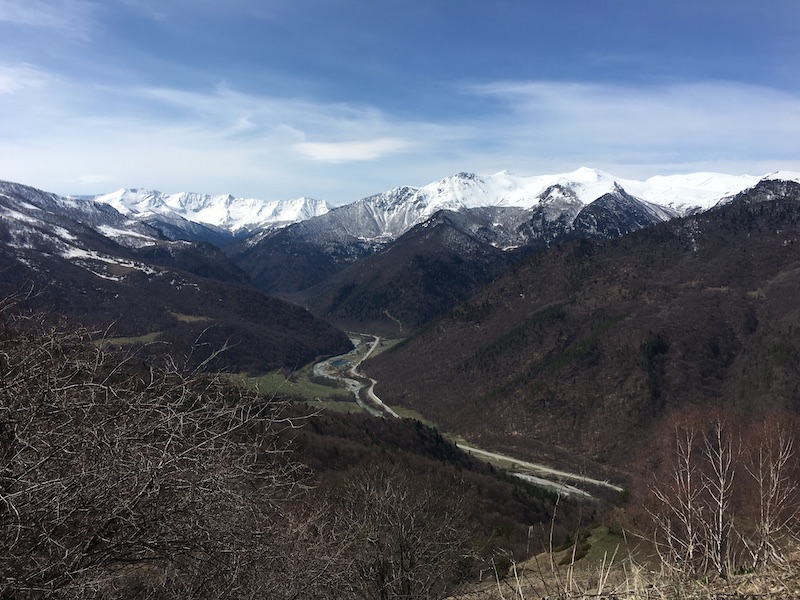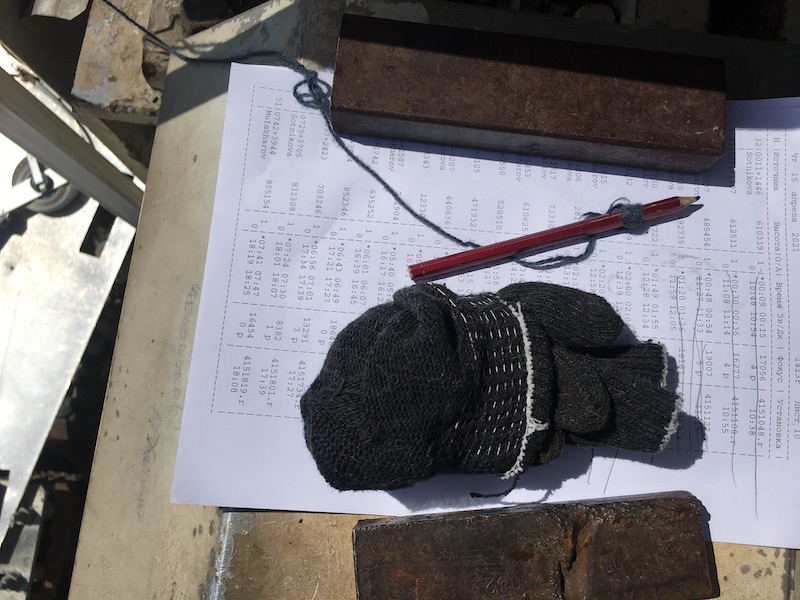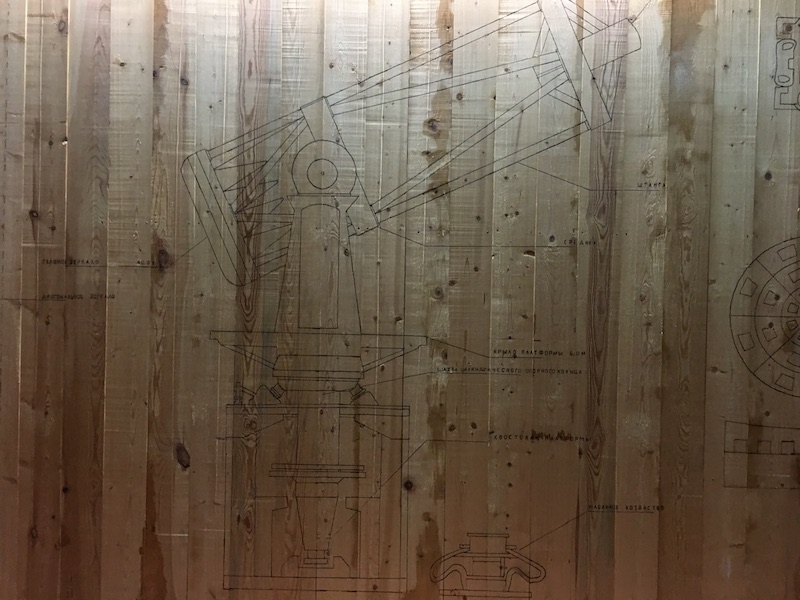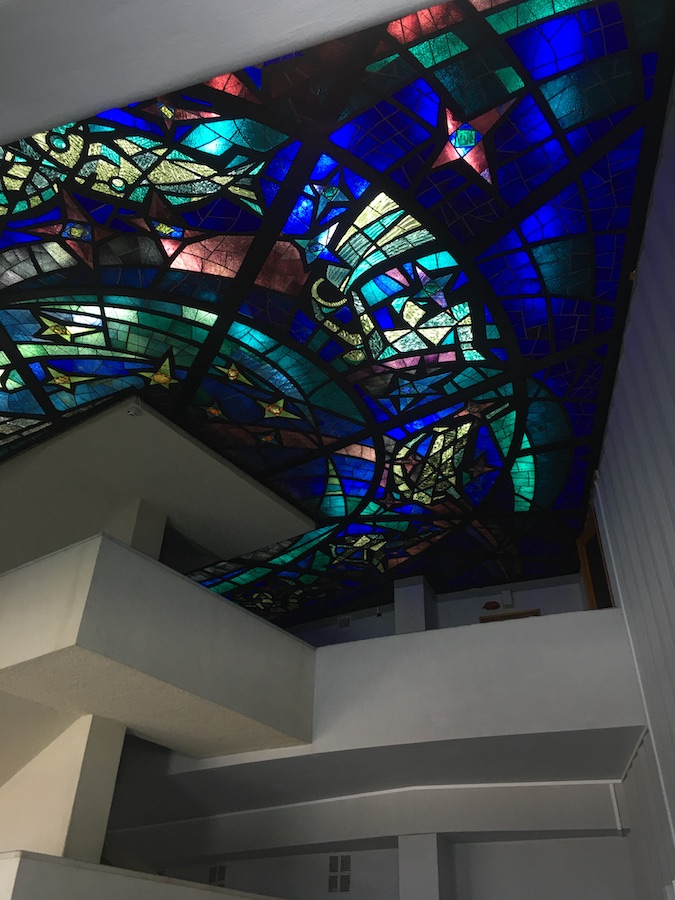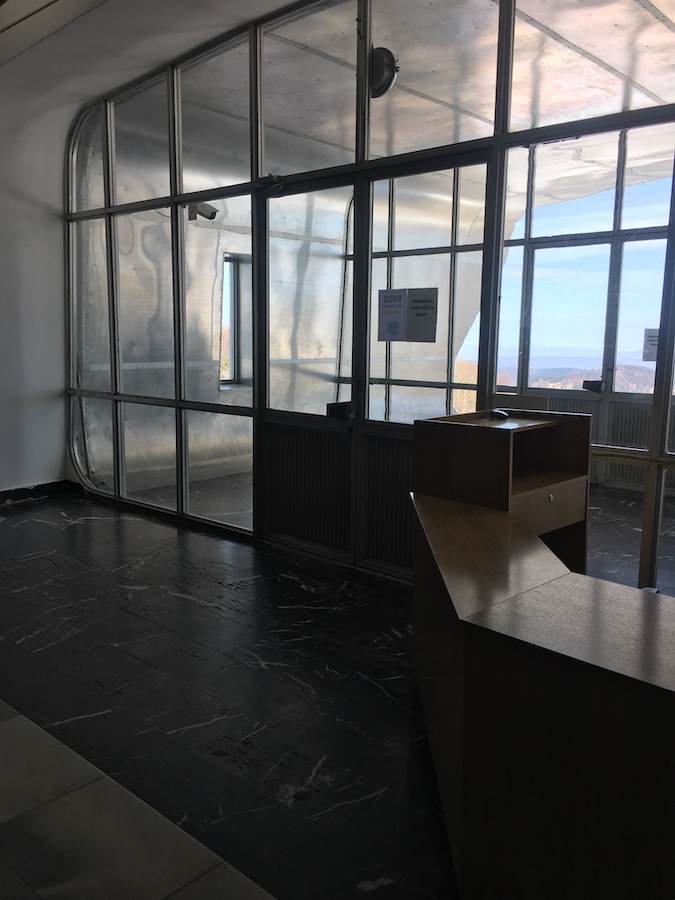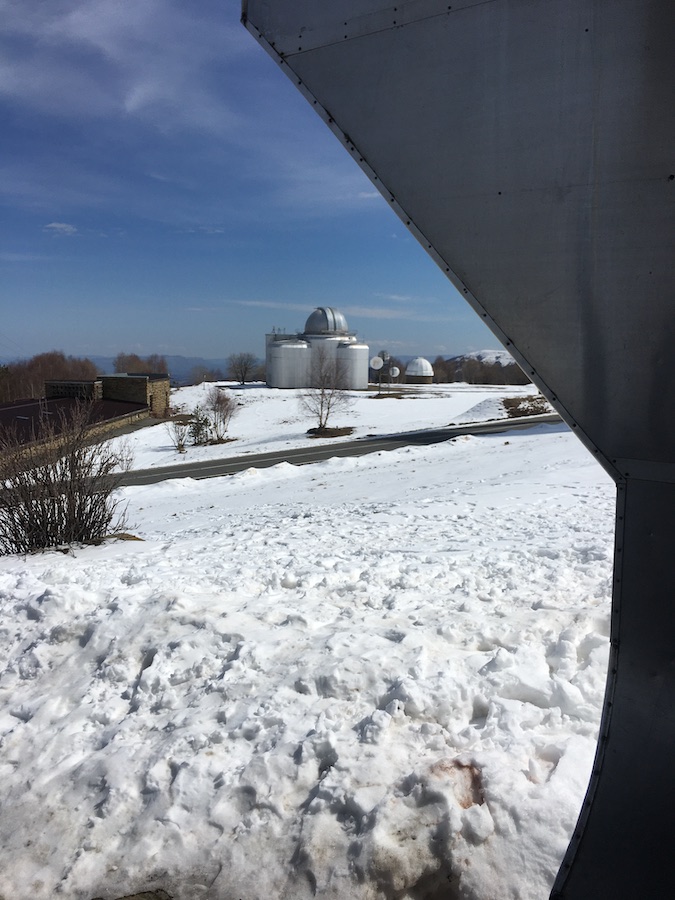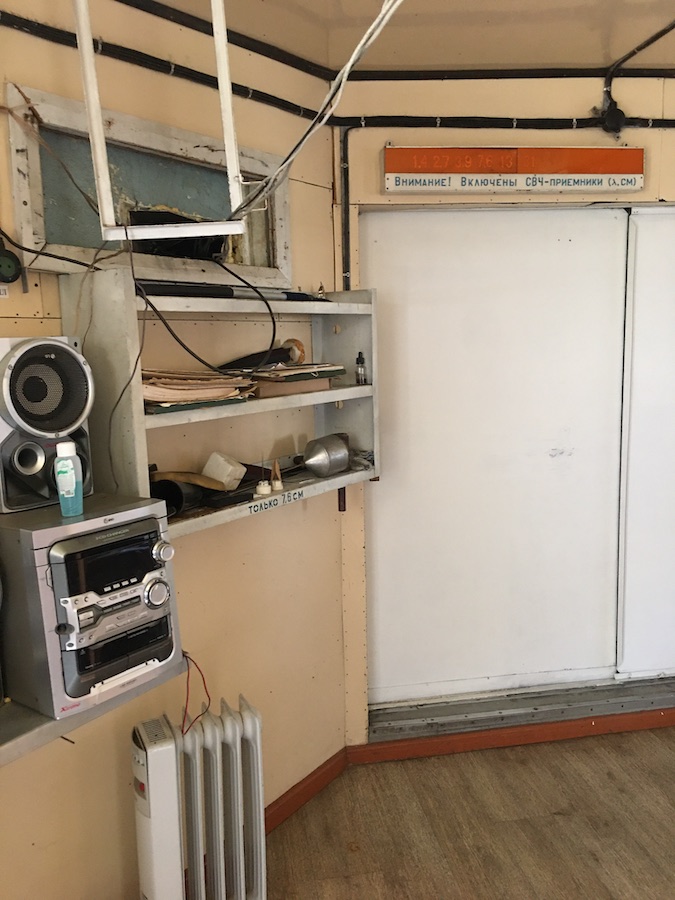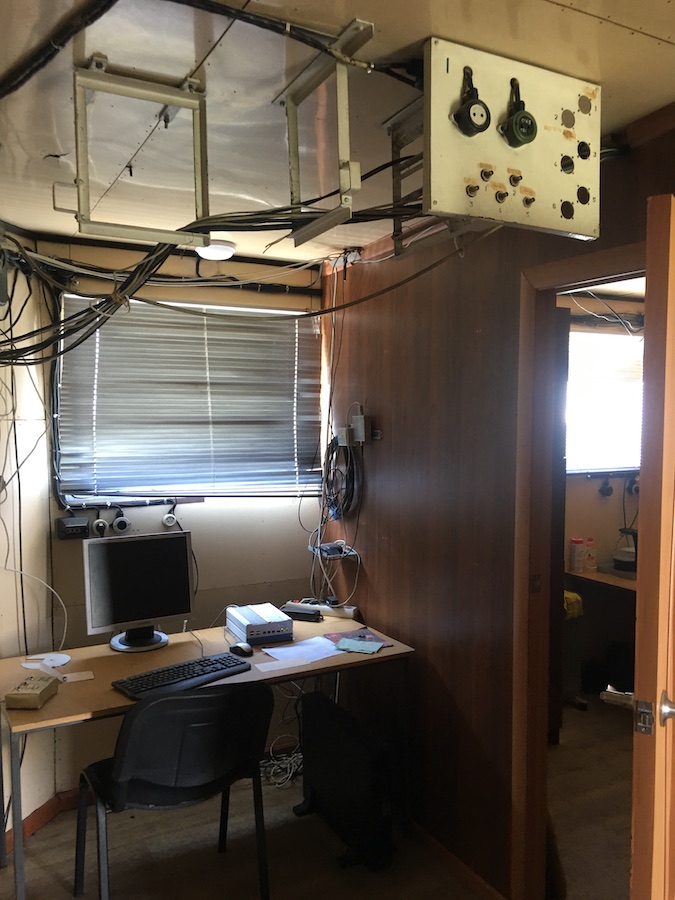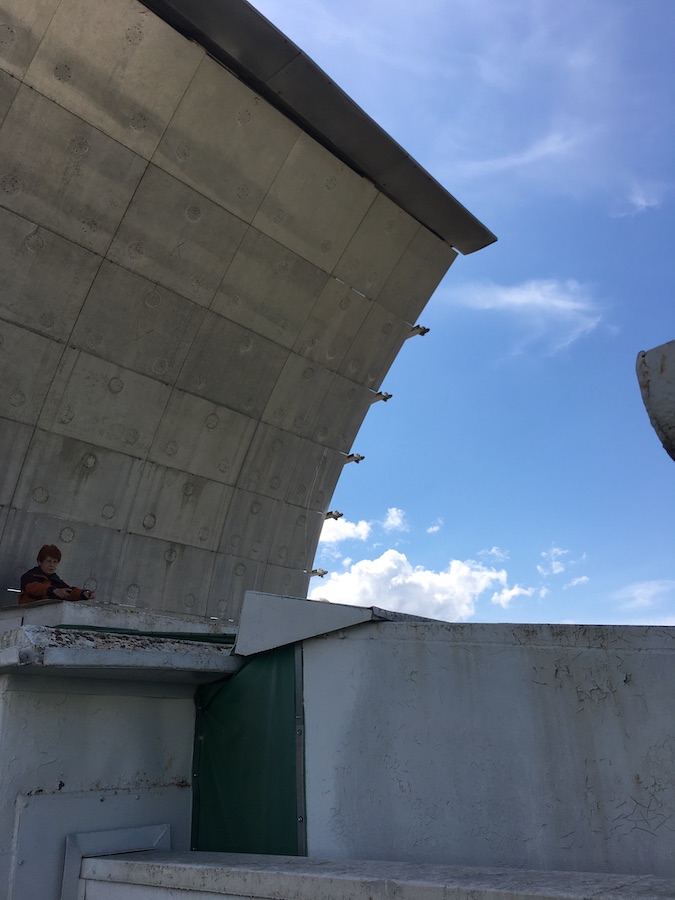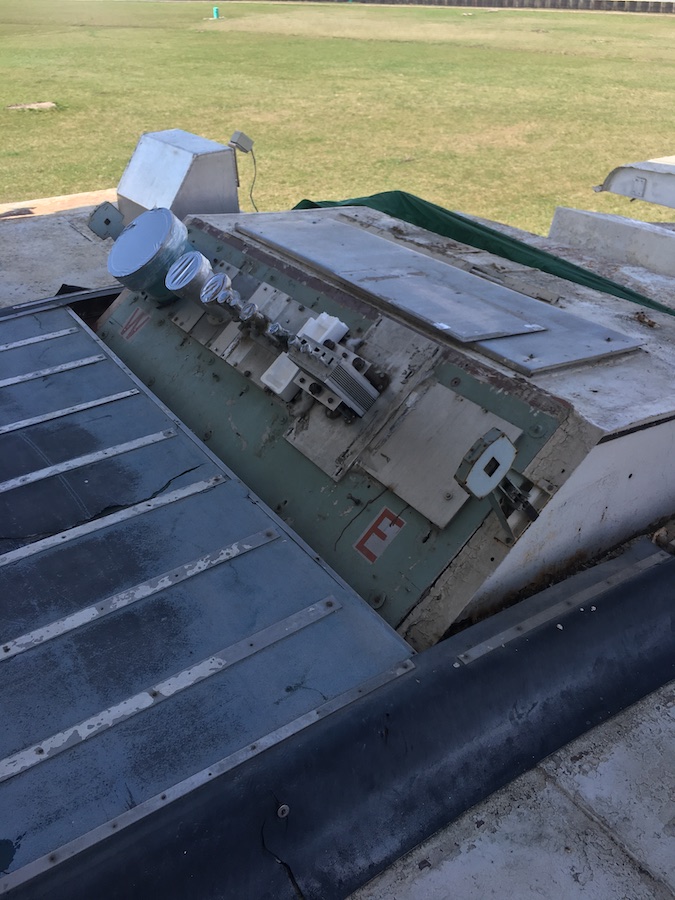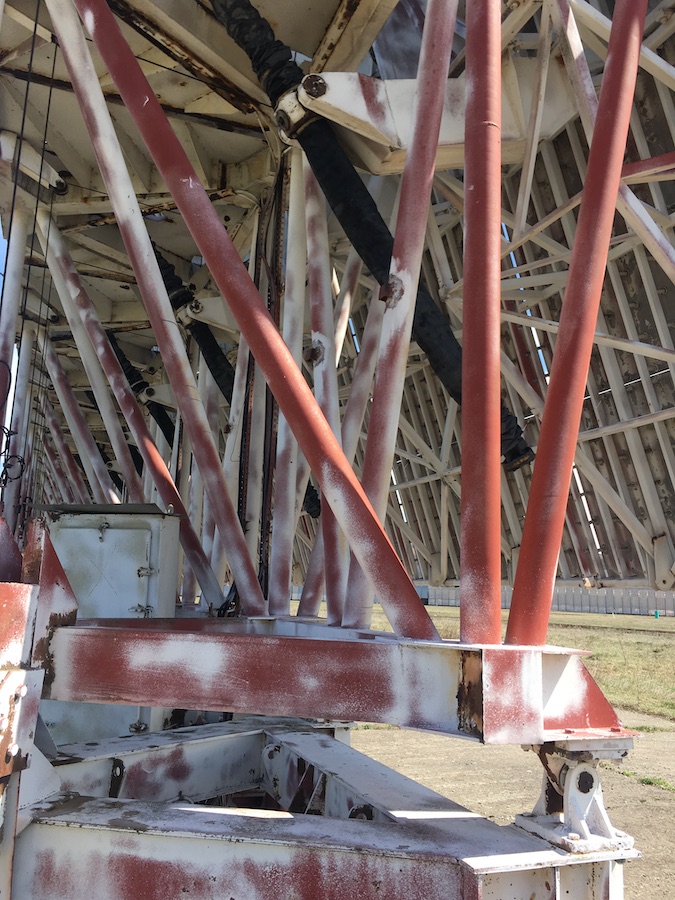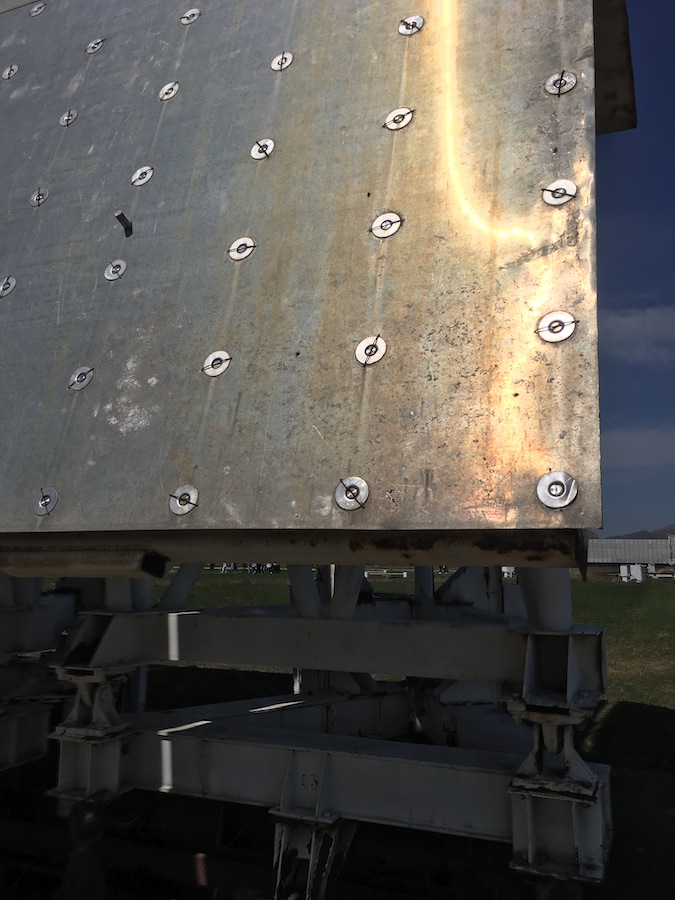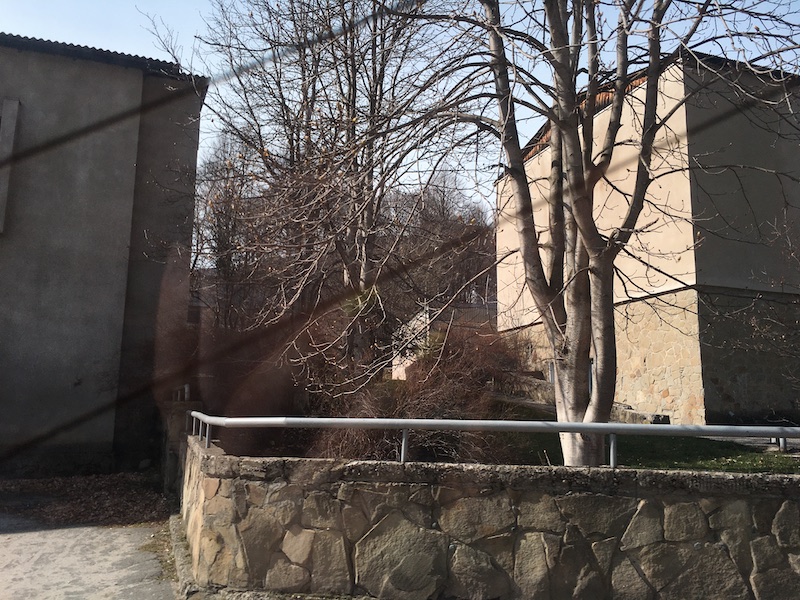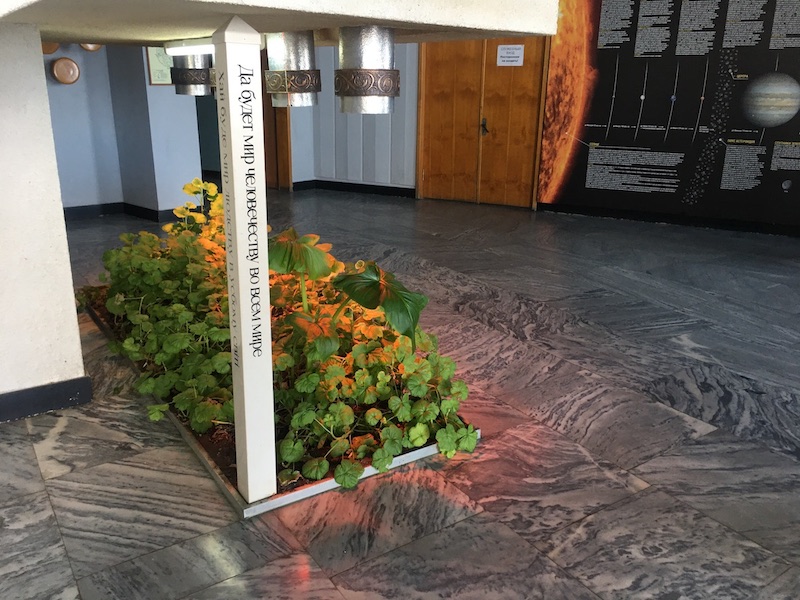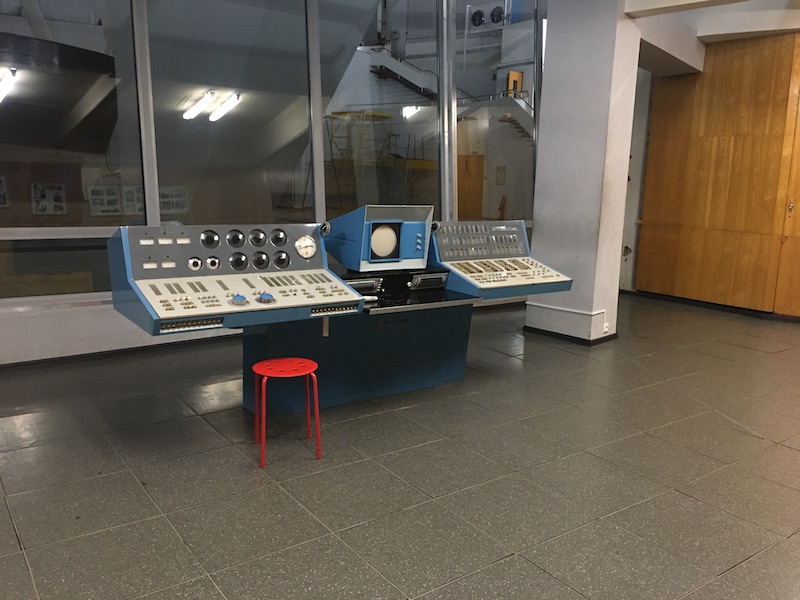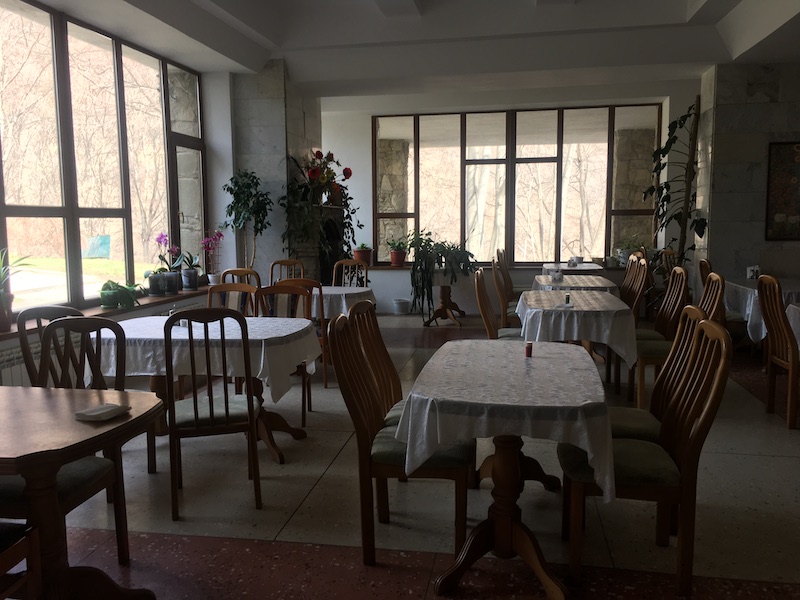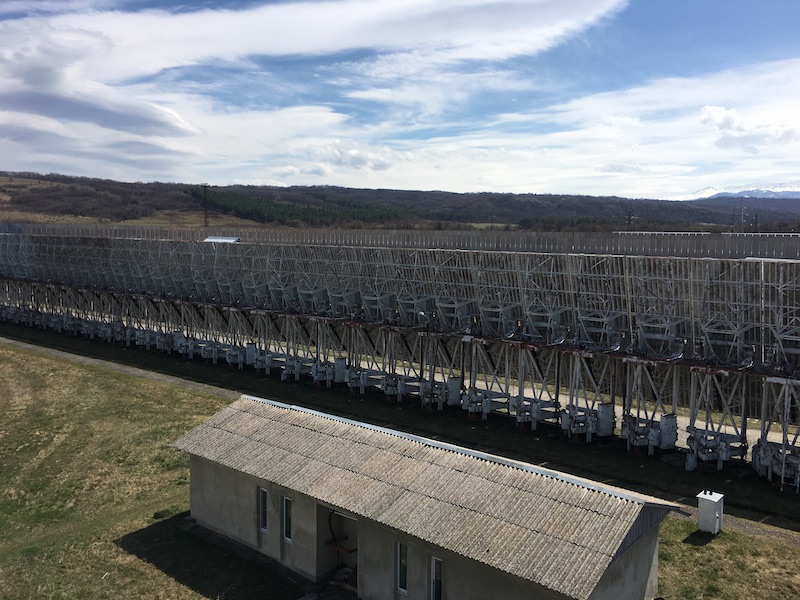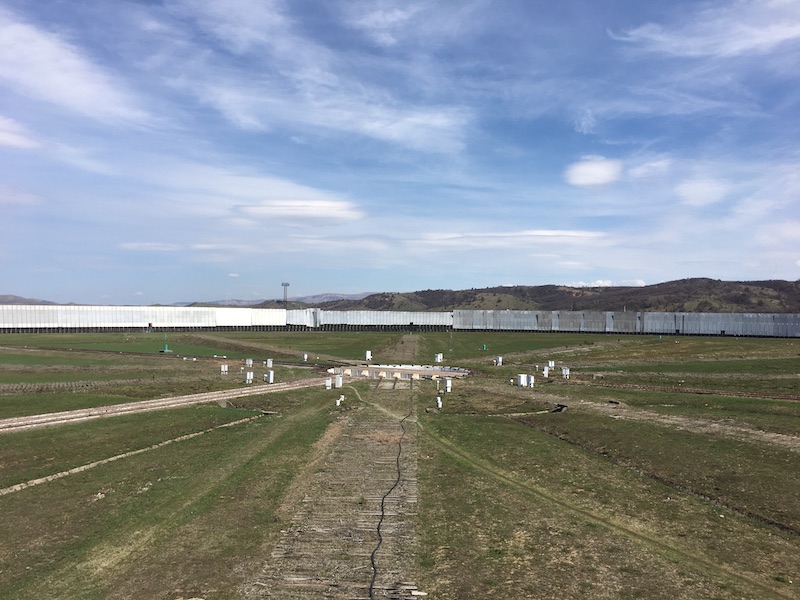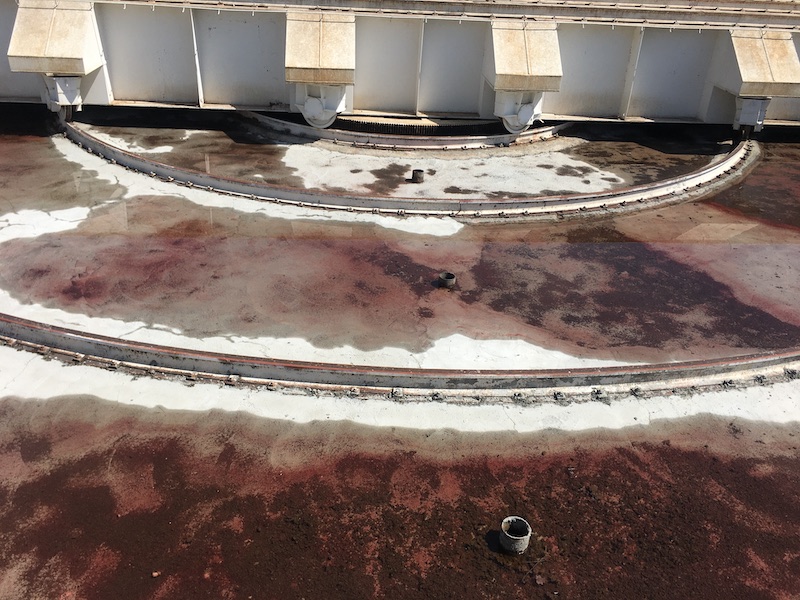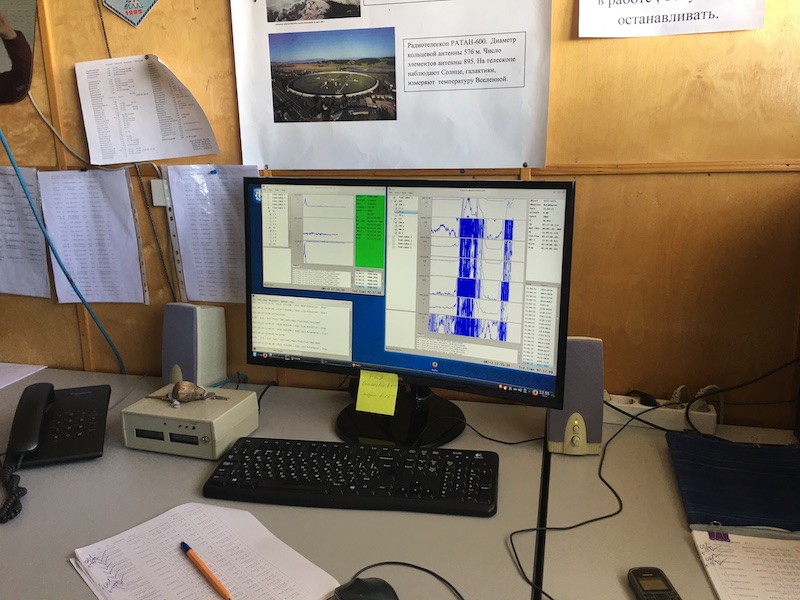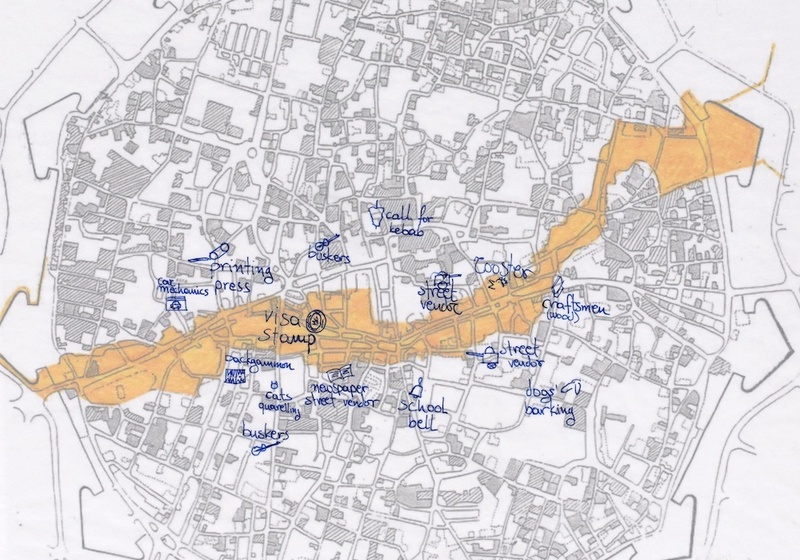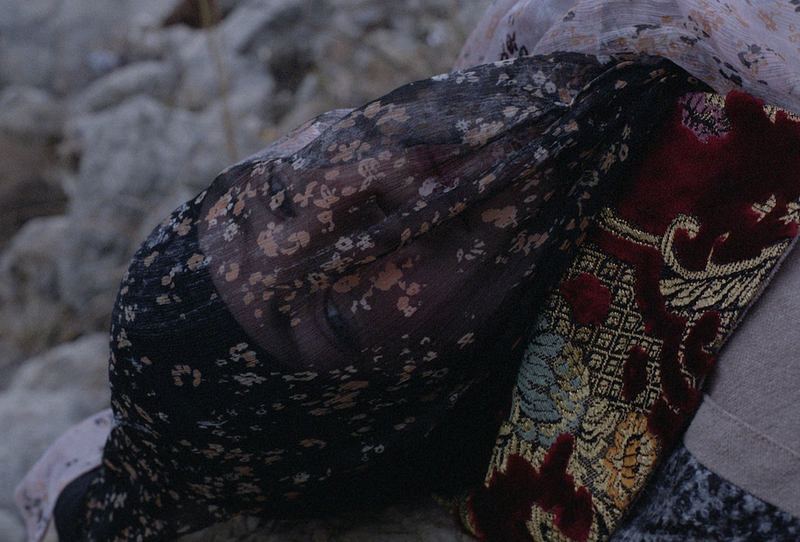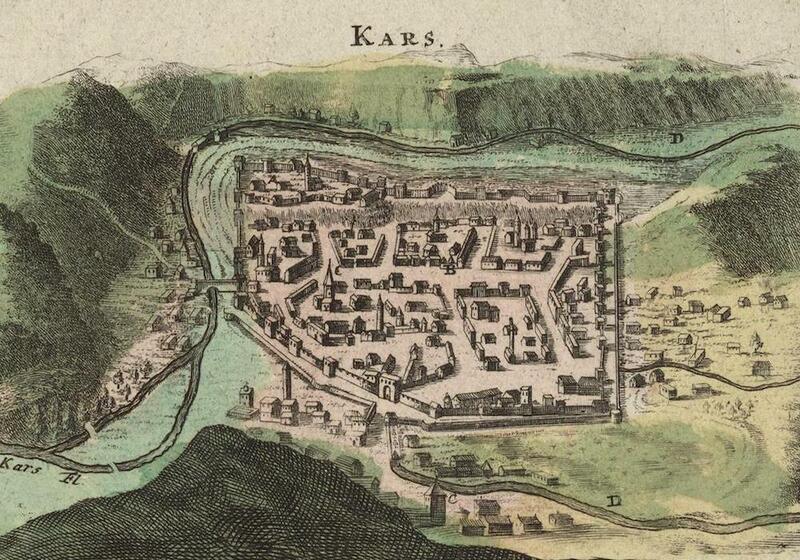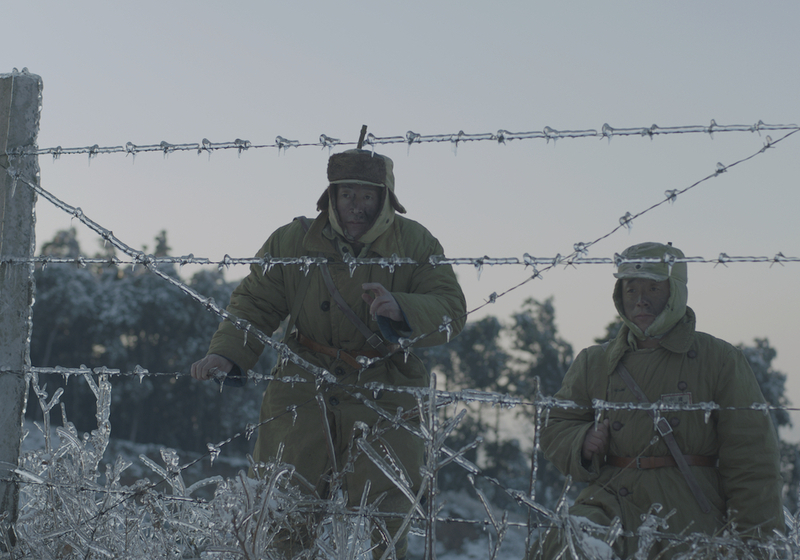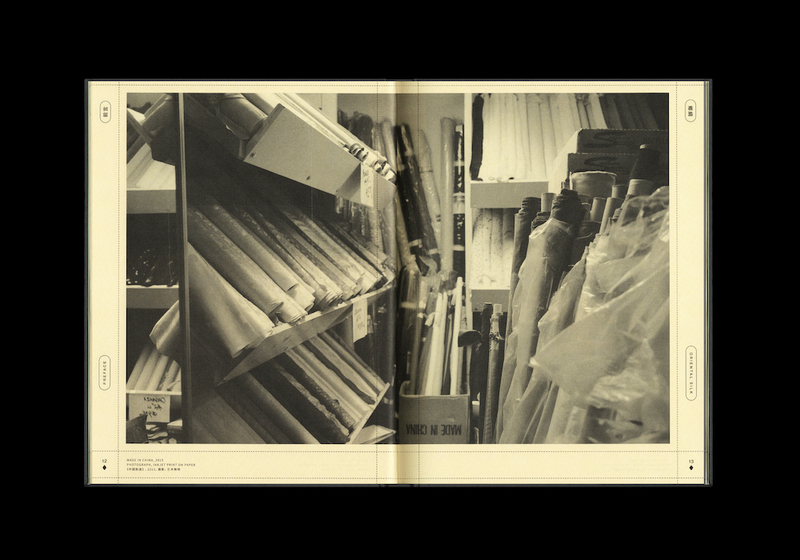Artist Sasha Puchkova speaks about her trip to Nizhny Arkhyz, where she explored the Special Astrophysical Laboratory of the Russian Academy of Sciences and RATAN-600. It’s one of the largest radio telescopes in Eurasia, technically capable of capturing energy vibrations coming from extraterrestrial civilizations.
THE UNION OF SCIENCE AND MYTH
Arriving in the science town of Nizhny Arkhyz, we find ourselves in a kind of Soviet space myth. Everything seems to be imbued with the spirit of Stanislav Lem's science fiction: time passes slowly and peace reigns all around. A pacified past in a relativistic accelerating present.
The town is located in a beautiful secluded area in Karachay-Cherkessia in the intermountain basin of the Arkhyz gorge, through which the Bolshoy Zelenchuk river flows. Life seems to be quite happy here, with children riding bicycles and workers repairing something near the research complex. At the entrance to the administrative building of the Special Astrophysical Laboratory of the Russian Academy of Sciences, a smiling woman sells eclairs and buns.
Ekaterina Filippova, the energetic head of the Observatory’s Information Department, meets us at seven thirty in the morning at the entrance to the village. “On the left, there are mechanical optical workshops. Larches have been planted here: soon the trees are going to turn green and it will be very beautiful in autumn . . . Here is our kindergarten. This is a school with a swimming pool downstairs with a gym on the top floor. The only school with a swimming pool in the area, by the way. The kindergarten has a museum of Alanian historyAlanian historyAlania was a medieval kingdom of the Iranian Alans (proto-Ossetians) in the Northern Caucasus, based in the location of latter-day Circassia, Chechnya, Ingushetia, and modern North Ossetia. In the last years of the Soviet Union, many intellectuals in the North Ossetian ASSR called for the revival of the name Alania. In November 1994, the name “Alania” was officially added to the republic’s title. and culture. Farther over there is the data-processing laboratory . . . Now—turn left,” says Ekaterina as she switches her attention to the driver.
We are already quite high in the mountains, 1,205 meters above sea level. The entirety of Nizhny Arkhyz, with its 800 inhabitants, is located on a slope: from the town’s main square one can see four residential buildings and a circular dormitory for scientists who have recently moved to the area, which also serves as an exhibition space and a planetarium. Many employees come and stay here, for example, the future director of the Observatory, astrophysicist Gennady Valyavin. Before returning to the Caucasus, he had worked in South Korea, Mexico, Greece, and Chile.
The place is truly unique: in addition to one-of-a-kind equipment, it has an astroclimate perfectly suited for observations, with neither light pollution nor dust in the atmosphere. The building of the observatory complex began in 1966. The residential area was not initially planned, since people were expected to live in Pyatigorsk or Kislovodsk and come here only to make observations. Then it turned out that the telescope required daily maintenance. Eight years later, the RATAN-600—one of the largest radio telescopes in Eurasia—was constructed. To give you an idea of its scale, imagine the size of twenty eight stadiums—the total area of the device.
It is already 8 AM and we have been brought higher into the mountains along the smooth winding road and dazzling passes, where the Kuban begins its course. The air is getting frosty and the dome of a large azimuth telescope can now be seen. “It's very cold there,” our guide warns. The gate at the entrance to the remote complex is open and we enter the building where the telescope is located. A modest greenhouse attracts our attention with a Peace Pole—a monument that displays the message “May Peace Prevail on Earth.” As a part of the World Peace Prayer Society project, similar structures have been installed in more than 120 countries.
Between the glass doors, there is an announcement with information about the excursions that are sometimes offered here—an indication of the hospitality of the complex’s employees and its unstable habitability. Ekaterina turns on the light and on the ceiling the stained-glass window made artists from Riga is illuminated. Uneven glass fragments were specifically brought to Nizhny Arkhyz for this composition. The plot is obvious—zodiacal constellations and an astronaut with wings, referring to the myth of Icarus. The same images can be found at BaikonurBaikonurThe Baikonur Cosmodrome is a spaceport in an area of southern Kazakhstan leased to Russia., in the monumental complex “Glory to the Conquerors of Space.”
The stained-glass sky features eighty eight constellations—it was this very number that was approved in 1922 by the International Astronomical Union and about fifty more constellations were not included in the final list. This historical fact is reflected in Alexandra Paperno’s piece Abolished Constellations created as a part of the international exhibition project of Gogova Foundation jointly with the Karachay-Cherkess Ministry of Culture, Austrian Cultural Forum, and Section A Wien. For this exhibition, the Special Astrophysical Observatory of the Russian Academy of Sciences allowed the general public to enter for the first time in fifty years.
We climb the stairs a few flights up, closer to the stained-glass window. In the room with a glass panorama wall there is a control panel made in the 1960s—now it is an exhibit shown during excursions, but in the past it was regularly used during the observation of celestial bodies. A large-scale structure with a mechanism resembling both a pendulum and an hourglass can be seen behind the glass—the largest alt-azimuth optical telescope in Eurasia with a 6-meter diameter of its main mirror. This object has an incredible story: the complex technological item was invented by Soviet optician Dmitry Maksutov in Leningrad during the war. Its weight was initially about seventy tons, in the process of its manufacturing it took 714 days to cool it down, after which the surface of the mirror was treated with special diamond polishing pads for six years. The parabolic shape, designed with immense precision, collects the rays of light and thus enhances the image of an object to a degree about 1 million times more sensitive than that of the human eye.
The floor with the telescope observation deck feels like a real study room: here you can find diagrams explaining various celestial phenomena, information on the main astronomical classifications, and the descriptions of the main scientific discoveries in the field of astronomy. The guide mentions that in the 1960s-1970s, astrophysicists actively debated the possibilities of detecting extraterrestrial civilizations: science and science fiction were developing in close connection. For example, pulsars were originally considered signals of potentially intelligent beings and their discovery eventually became one of the biggest surprises in the history of astronomy.
But Soviet researchers were not the only people to get passionate about extraterrestrial communication hypotheses. The Mysterious Wall, a film directed by Irina Povolotskaya and Mikhail Sadkovich, reflects the interests of that era very well: in the center of its plot there is a story of a foggy blanket suddenly appearing in the taiga and causing visions from the past of people who had contacted it. While researching the mysterious wall, scientists come to the conclusion that this phenomenon is a message from a distant civilization and start to look for ways to establish contact with it.
IMAGES OF THE FUTURE AND THE KARDASHEV SCALE
In 1964, Astrophysical Journal published an article by astrophysicist Nikolai Kardashev “Information Transmission by Extraterrestrial Civilizations," which proposed a scale for measuring the technological advancement of alien societies based on the amount of energy they were able to use. Later, the scale was named after its inventor.
The Kardashev scale has also become one of the central themes of The Terraforming program of the Strelka Institute for Media, Architecture and Design in 2020–2021. On the basis of this theme, a team of scholars created Backcasting Kardashev One—a research project dedicated to rethinking energy, civilization, and planetarity. Yevheniia Berchul, Yulya Besplemennova, Stuart Turner, and Iani Zeigerman used the scale as a perspective for considering a number of problems they were interested in: from the role of energy in the planet’s metabolism to the influence of the technosphere on the development of civilization. Although in science fiction one can come across a lot of examples of the application of Kardashev scale for the description of extraterrestrial worlds, the team set itself the goal of applying it to our planet. They wanted to invite the most outstanding astrophysicist to join their research, but he unfortunately passed away in 2019.
The term “backcasting” literally means “looking back from the future” and it is directly related to The Terraforming program (2020–2021), the motto of which was “To make sense of such a future involves returning to the past.” As part of the Backcasting Kardashev One project, scholars created four scenarios for the future development of earth-based civilization and then analyzed each of them retrospectively. The research resulted in several chains of events placed on the same timeline and located between the present moment and different options for the future.
As part of the preparation of this project (which was eventually published online and included an essay, a video, and a music compilation, the participants divided the responsibilities according to their specialties, thus sharing the responsibility for the research. Stuart, an electronic music producer and performer, created an EP and numerous visual effects. Yulya, a service designer and systems thinker, developed a website, diagrams, and frameworks. Iani, who specializes in mechanical engineering and working as a public policy specialist, was in charge of quantitative data and overall project management. And Yevheniia, an architect and urban designer, created most of the visual effects and was responsible for all the animations.
The curators of Gogova Foundation, which for five years have been organizing residencies for interdisciplinary artists throughout Russia, including Nizhny Arkhyz, came across Backcasting Kardashev One and invited its creators to develop their ideas on the platform of the Special Astrophysical Observatory. Their interaction with the space both transformed and added to the project: the curator of the foundation Daria Kravchuk and The Terraforming lecturer Nicolay Boyadjiev developed a concept of the exhibition RATAN. 21.33. Backcasting Kardashev One, where the structure of the telescope is rethought in the context of landscape art.
Expositionally, the project combines two autonomous but contextually related parts: a film projected onto two screens inside the planetarium and a soundscape that the viewer can listen to while traveling through the territory of the RATAN-600 telescope. The soundtrack uses not only the sounds of traditional instruments such as the piano and French horn, but also libraries with the sound of space radio waves recorded by NASA, program synthesis, and various other effects. Sound is also a full-fledged element of the film; the animation of black on white particles was created by inputting audio signals through an oscilloscope in a special program and recording the results.
Why was the RATAN-600 chosen for the exhibition? The radio telescope records the phenomena that cannot be seen with an optical telescope and is also capable of functioning during the day. Scientists use it to observe extremely distant galaxies, flare objects and microwave radiation, and the temperature of the sky background, which signals the state of the universe after the Big Bang. Theoretically, the RATAN-600 is also able to capture energy vibrations emanating from extraterrestrial civilizations and it is this very equipment that Nikolai Kardashev would have used to test his theory. The exhibition runs until May 16—for all of this time the exhibition space and the RATAN-600 radio telescope are open to visitors. The organizers also hope to show the project or portions of it in Moscow.
The porch of the office building where the radio telescope is located is covered with ivy. Together with the dazzling sun and an old motorcycle at its steps, the place resembles a sanatorium or a botanical garden. We enter the territory of the radio telescope itself—a large field with a 500-meter diameter surrounded by 895 rectangular reflective elements. Despite the grandeur of the structure and its unreal scale, we observe a calm life peacefully passing here. We climb to the roof of a mobile observation post, which moves across the field along rails, and step inside. “We knew you would come,” employees say and this phrase reminds one of an episode once read in some science fiction novel. The reason is actually rational: scientists receive data from the telescope in the radio wave range and can “see” the spectrum changing with living beings entering the territory. I cannot but feel I am on the distant planet of Solaris—in a couple of minutes the annihilator will start off, a light will flash, a weak wave will hit, and the phantom that we are observing right now will disappear.
Translated from Russian by Olga Bubich
